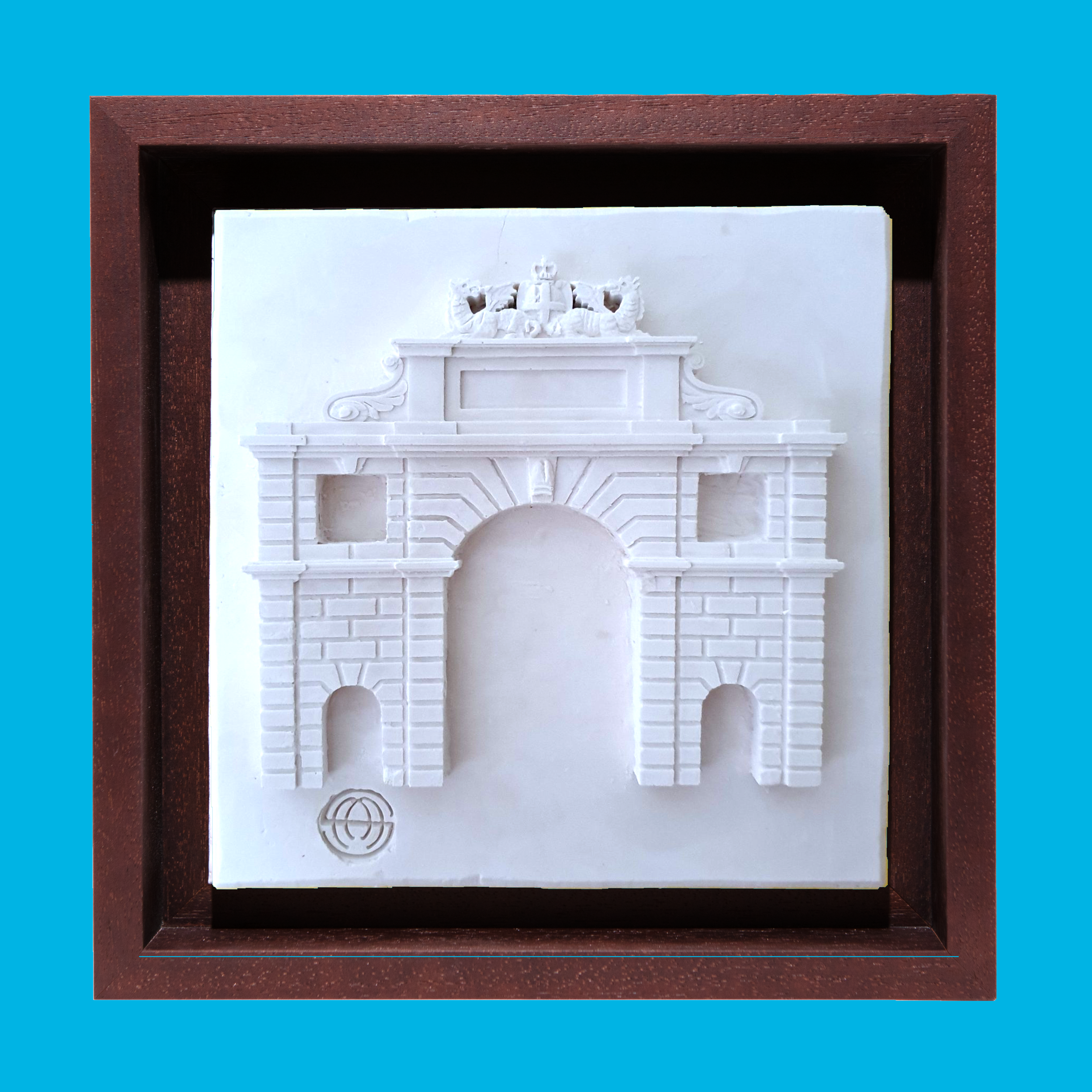Moorgate Cast
A cast of the Moorgate modelled from etchings prepared for Chamberlain’s “History of London” made shortly before the gates were demolished in 1760.
The cast is 22cm by 22cm, and is supplied wired up ready for hanging. Please note that there is a 1-week lead time on these casts as they are made to order, including hand-finishing.
Available blank or painted.
From Wikipedia:
The earliest descriptions of Moorgate date from the early 15th century, where it was described as only a postern in the London city wall. Located between Bishopsgate and Cripplegate and leading to a marshy open space known as Moorfields, it was not one of the larger or more important of the city gates.
In 1415 an ordinance enacted that the old postern be demolished. It was replaced with a newer and larger structure located farther to the west, which included a wooden gate to be shut at night. This gate was enlarged again in 1472 and 1511, and then damaged in the Great Fire of London in 1666. Although the City gates had ceased to have any modern function apart from decoration, it was replaced along with Ludgate, Newgate, and Temple Bar with a stone gate in 1672.
The gate was demolished in 1761.
A cast of the Moorgate modelled from etchings prepared for Chamberlain’s “History of London” made shortly before the gates were demolished in 1760.
The cast is 22cm by 22cm, and is supplied wired up ready for hanging. Please note that there is a 1-week lead time on these casts as they are made to order, including hand-finishing.
Available blank or painted.
From Wikipedia:
The earliest descriptions of Moorgate date from the early 15th century, where it was described as only a postern in the London city wall. Located between Bishopsgate and Cripplegate and leading to a marshy open space known as Moorfields, it was not one of the larger or more important of the city gates.
In 1415 an ordinance enacted that the old postern be demolished. It was replaced with a newer and larger structure located farther to the west, which included a wooden gate to be shut at night. This gate was enlarged again in 1472 and 1511, and then damaged in the Great Fire of London in 1666. Although the City gates had ceased to have any modern function apart from decoration, it was replaced along with Ludgate, Newgate, and Temple Bar with a stone gate in 1672.
The gate was demolished in 1761.
A cast of the Moorgate modelled from etchings prepared for Chamberlain’s “History of London” made shortly before the gates were demolished in 1760.
The cast is 22cm by 22cm, and is supplied wired up ready for hanging. Please note that there is a 1-week lead time on these casts as they are made to order, including hand-finishing.
Available blank or painted.
From Wikipedia:
The earliest descriptions of Moorgate date from the early 15th century, where it was described as only a postern in the London city wall. Located between Bishopsgate and Cripplegate and leading to a marshy open space known as Moorfields, it was not one of the larger or more important of the city gates.
In 1415 an ordinance enacted that the old postern be demolished. It was replaced with a newer and larger structure located farther to the west, which included a wooden gate to be shut at night. This gate was enlarged again in 1472 and 1511, and then damaged in the Great Fire of London in 1666. Although the City gates had ceased to have any modern function apart from decoration, it was replaced along with Ludgate, Newgate, and Temple Bar with a stone gate in 1672.
The gate was demolished in 1761.

























